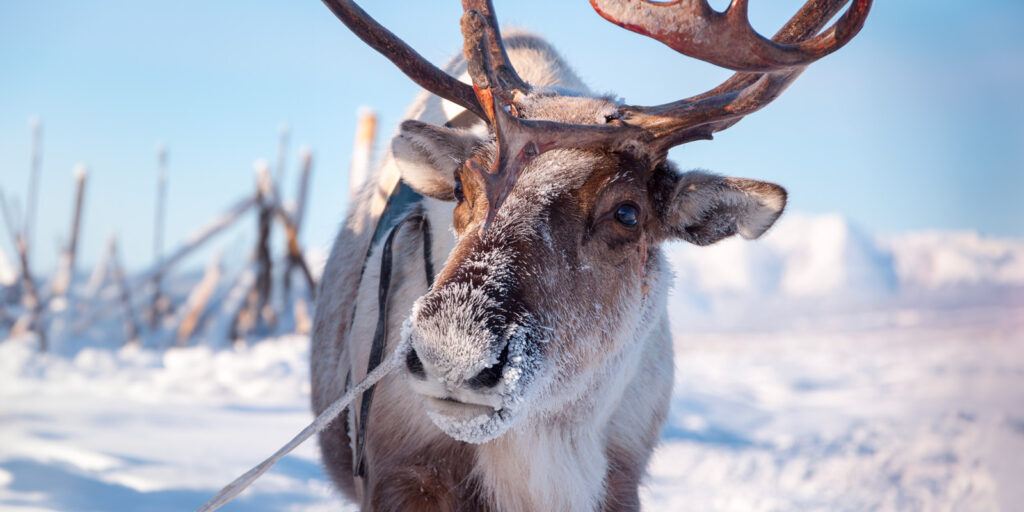1. In winter, local residents carry “Natasha” with them
There is not a single settlement on the territory of Yakutia where there is no recorded if the frosts were below −50 °C, and last year the weather station noted a new temperature record: in some areas the temperature dropped to −60 °C. Previously, people without their own garages had a hard time: either abandon their frozen car until spring, or five months don’t jam engines. Solution it’s arrived from Buryatia. There, in 2010, they began producing and selling “Natasha” – a thermal case, which is also called a portable garage. Now most Yakut motorists have one in their trunk or on the roof. They put it on the car while it is parked, turn it on automatically based on the temperature, and the heat disappears more slowly. And to prevent Natasha from being stolen, owners, as a rule, paint the car number directly on the cover.
2. It is customary here to celebrate the New Year twice
Locals first note This holiday, together with all Russians, takes place in winter, and then, according to ancient tradition, in summer. The local New Year is called Ysyakh, from Yakut translated as “abundance”. For many centuries, peoples celebrated it on the day of the summer solstice – June 21. However, the modern rhythm of life has made its own adjustments, and now the date “floats”: from June 10 to June 25.
Folk festivals are held in most settlements of the Sakha Republic, but the main festival is usually passes in the Us-Khatyn ethnocomplex near Yakutsk. The culmination of the holiday is considered to be a folk round dance – osuokhai. It symbolizes the circle of life. The dancers move in the direction of the sun, performing songs praising life, nature and the entire world around them. It is believed that everyone who drives an osuokhai receives a charge of solar energy for the year ahead. In 2012, in such a round dance took part 15 thousand people, and it was included in the Guinness Book of Records as the most popular dance.
3. Strawberries and watermelons are grown not far from Yakutsk
Just 15 years ago there was no question of planting heat-loving crops in the permafrost zone. However, with the development of selection this became possible. Now farmers prepare seedlings in greenhouses and after warm weather sets in, they are transferred to the ground. Due to daylight hours, which in summer lasts almost 20 hours, the capricious berries have time to ripen. And not only them: farmers successfully cope with sunflowers, cucumbers, tomatoes, wheat and other traditionally southern crops.
By the way, a harsh winter has its advantages for farmers. Not so here developed agricultural diseases and parasites, as, for example, in Central Russia. Therefore, they need to be treated with chemicals less often.
4. Many Yakuts have only seen deer in pictures
Deer in Yakutia are the same stereotype as bears in Russia for foreigners. The region is truly famous for its reindeer herding farms: for the Evenks, Yukaghirs, and Dolgans it is traditional fishing However, the scale is still not the same. The herds graze mainly in the north of the Republic. This is due to the peculiarities of breeding and nutrition of such livestock. There are few large settlements there. Most of the population lives in large cities such as Yakutsk, Neryungri, Mirny, Lensk and Aldan. This is the central and southern part of the region. Therefore, most likely, many Yakuts never did not see live reindeer, much less rode sleds along city streets.
5. People who live 300–400 kilometers away may be considered neighbors here.
The Republic of Sakha is the largest region of Russia and the largest administrative-territorial unit in the world. Yakutia is even larger than Kazakhstan and Argentina. At the same time, the population density is only 0.32 people per 1 km². In rural areas you can drive hundreds of kilometers and not meet a single living soul. Therefore, residents of the nearest settlement, which takes several hours to get to, may well be considered neighbors here.
Because of the distances, many things we are used to look a little different here. For example, suddenly visiting relatives in the village for the weekend or sending flowers to a girl in another city is more difficult than in Moscow or Nizhny Novgorod. Logistics are also complicated by the weather: during high water and off-season, it is possible to reach remote corners of the Republic only with the help of aviation. Doctors also use this method. For example, now mobile teams of medical workers fly in the regions of the republic to examine and operate on local residents.
6. Houses are built so that the wind can flow freely under them
Pile construction is the only method that ensures the stability of structures in permafrost conditions. The fact is that heat emanates from any building: communications heat not only the people inside, but also the soil around them. If the permafrost begins to melt and settle, the foundation “floats” and there is a risk of collapse.
The technique was developed back in the late 1940s. Leningrad hydraulic engineer Mikhail Kim exiled to Norilsk, which by that time had already experienced several collapses of high-rise buildings. Kim proposed freezing the piles into an ice base, leaving a ventilated pocket under the warm “belly” of the structure. Thanks to this decision, it was possible to develop not only Norilsk, but also other northern regions. Therefore, “houses on chicken legs” are still the calling card of Yakut cities.
